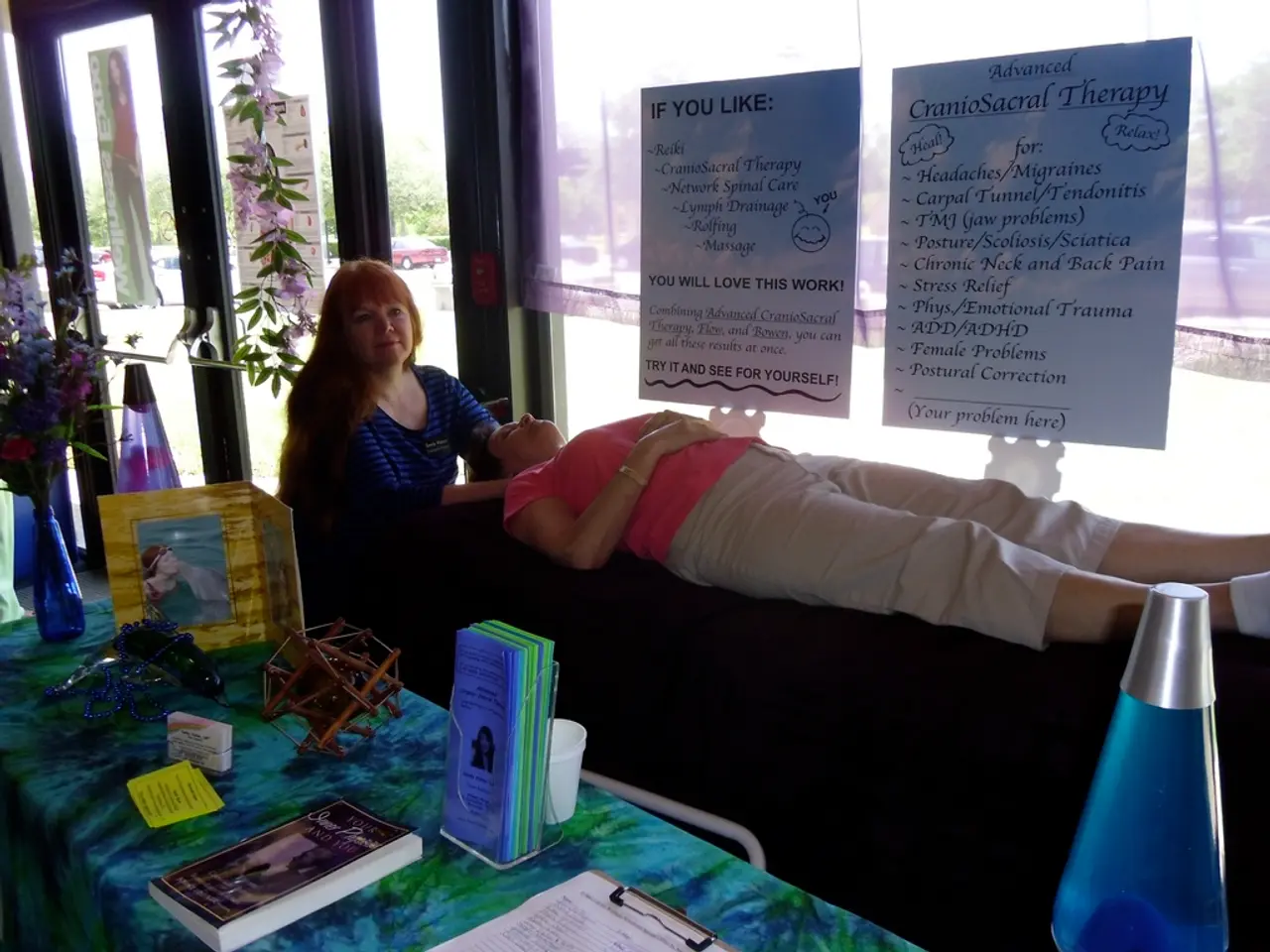Unconventional Techniques for Managing Anxiety and Stress, Supported by Scientific Evidence
In the face of anxiety, finding effective coping strategies can be a challenge. However, a diverse array of unconventional methods, backed by scientific research, can help manage anxiety beyond traditional relaxation techniques.
One such method is thought labeling, a technique that involves explicitly naming intrusive anxious thoughts. By doing so, the brain's prefrontal cortex is activated, shifting activity from emotional centers to rational cognitive processing. This psychological distancing reduces the emotional impact of anxiety-provoking thoughts [4].
Another unusual yet effective strategy is the 5-4-3-2-1 grounding technique. This exercise engages multiple senses (identifying five things seen, four touched, three heard, two smelled, and one tasted) to occupy working memory and calm the nervous system, effectively interrupting the physiological components of anxiety [4][5].
Controlled breathing patterns, such as square breathing and the 4-7-8 breathing method (inhale for four seconds, hold for seven, and exhale for eight), also help activate the parasympathetic nervous system and counteract hyperventilation and acute anxiety responses [2][4].
Physical exercise combined with social support has been shown to reduce anxiety directly and enhance social support, further suppressing anxiety symptoms, suggesting a dual mechanism involving physiological and social factors [1].
Employing a diverse "emotional toolbox" — using multiple coping strategies flexibly according to the situation — is associated with better anxiety management than relying on a single technique [3].
Engaging in distraction activities that provide absorption and enjoyment, such as pleasurable activities or meaningful social interactions, can act as a temporary relief from anxiety by breaking rumination cycles, although this does not address the root causes [5].
The renowned Jewish psychiatrist Viktor Frankl, who lost his pregnant wife and the majority of his family to the Nazi camps, discovered that those prisoners who still had meaning in their lives were far more resilient to suffering than those who did not, even under horrendous circumstances. Frankl wrote that everything can be taken from a man but one thing, the last of the human freedoms - to choose one's attitude in any given set of circumstances [6].
Studies have shown that what really gives us purpose is to be needed and depended on by someone else [7]. The practice of "doing it badly" allows one to start tasks immediately without worrying about perfection, and doing something for someone else is the best medicine and defence against poor mental health [8].
The act of "doing it badly" can help relieve stress for perfectionists and those who worry excessively about the finer details [9]. The quote, "Anything worth doing is worth doing badly," by GK Chesterton, may have merit in reducing stress.
The 'Catastrophe Scale', a coping skill for anxiety, helps put previous worries into perspective and see exactly how they measure up in the real world. Examples of low-scoring events on the 'Catastrophe Scale' include being late for a job interview and spilling tea on one's shirt [10]. Setting aside a specific time to worry about problems can be more productive than dwelling on them throughout the day [11].
Mixed anxiety and depression is one of the most common mental disorders in the UK currently, and 40% of global disability is attributed to anxiety and depression [12]. Referring to oneself in the third person can provide a psychological distance from a problem, aiding in effective problem-solving [13]. The practice of "waiting to worry" can free up the rest of one's time and prevent anxiety during the day [14]. The idea of "waiting to worry" can help manage excessive worry and stress related to a problem [15].
Frankl's seminal work, 'Man's Search for Meaning', was written in nine days in a Nazi concentration camp [6]. The absolute worst thing one can imagine would happen to them is written near the 100 scale on the 'Catastrophe Scale' [10].
These examples highlight that less commonly discussed methods, like thought labeling, multisensory grounding, and flexible strategy use, are supported by research as effective coping skills for anxiety. By incorporating these techniques into our lives, we can find solace and resilience in the face of anxiety and maintain our sense of purpose.
- The 5-4-3-2-1 grounding technique, an unconventional method for managing anxiety, occupies working memory and calms the nervous system, thus interrupting the physiological components of anxiety.
- Engaging in physical exercise and obtaining social support has been proven to reduce anxiety directly and suppress anxiety symptoms by involving both physiological and social factors.
- Adopting a diverse "emotional toolbox" of coping strategies and flexibly employing them according to the situation is associated with better anxiety management.
- Distraction activities that provide absorption and enjoyment, such as pleasurable activities or meaningful social interactions, can act as temporary relief from anxiety by breaking rumination cycles.
- Referring to oneself in the third person can provide a psychological distance from a problem, aiding in effective problem-solving.
- The practice of "doing it badly" can help relieve stress for perfectionists and those who worry excessively about the finer details, allowing one to start tasks immediately without worrying about perfection.




